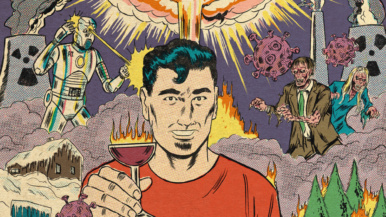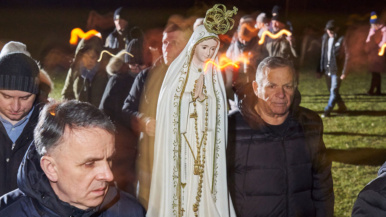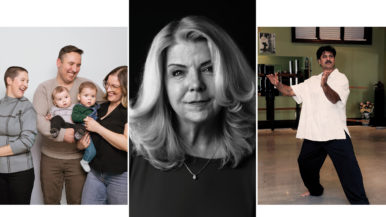Cheryl Thompson on writing Black history through the recovery of Canadian archives
A closer look into her work in Canada’s history of performance, global entertainment, and anti-Black racism

Professor Cheryl Thompson joined The Creative School at Toronto Metropolitan University (formerly Ryerson University) four years ago within the School of Creative Industries. In January, her appointment to Assistant Professor in the School of Performance marked an exciting new venture for the renowned scholar, whose ground-breaking work spans cataloguing Ontario’s Black archival collection and intersecting the disciplines of communications and performance in academia within the context of Canadian Black history. “I had a desire to teach courses that directly addressed stories around theatre and entertainment,” she says. “I couldn’t be more thrilled.”
For over 70 years, The Creative School at Toronto Metropolitan University (formerly Ryerson University) has led and inspired the transformation of the creative industries. The dynamic faculty is known for impactful professional learning and depth of scholarship, innovation, and critical thinking.
In conversation with Toronto Life, Thompson discusses the power of archiving, her upcoming book, and how she’s using an interdisciplinary approach in the classroom to flip the script on traditional academia.
How has The Creative School provided an environment where your area of research can thrive?
Although I’m trained in the discipline of communication studies, I’ve never really believed in disciplines. The very nature of my work is interdisciplinary, and I try not to think too much about what category it should fit into. The Creative School happens to be a place where interdisciplinary research is embraced. I’ve been able to collaborate with people across different areas of study, including the School of Fashion and the Faculty of Arts—which was pivotal in my contributions to the Black Studies minor, among the first of its kind in Canada. The Creative School has allowed me to embrace the idea of academics being strongest when you have people trained in different disciplines coming together to solve a problem.

In 2021, you were the recipient of an Ontario Early Researcher Award, Mapping Ontario’s Black Archives: Building An Inventory Through Storytelling. How important do you believe archiving is in deepening our understanding of Canadian history?
When we have questions about the present that we’re trying to answer, looking to the past provides an incredible amount of insight—I truly consider it a window into the past. Archives house original documents and imagery that allow us to put the pieces together and better understand our societal and institutional circumstances today; I can even pinpoint in some cases the turning points that led us to where we are today.
How does this research potentially impact future generations and how does it provoke a deeper understanding of representation in this country? What does this mean for the future of Canadian content and content creation (impact on Canadian culture)?
The first thing it does is tell young people that many of the things we’re experiencing today aren’t new. Time and time again, newer generations tend to act as though everything that is happening is just happening now for the first time. Stepping into the archives gives us the power to say that this isn’t necessarily so. What is different now are the reimagined ways we interact with old forms. We live in a digital world now, where everything has a connection to technology. The same societal shifts happening now happened before but with different technology. It’s not the thing that’s changed but the ways we interact with it.
By making Canada’s archival records more accessible for the public to search via on-line collections, this research not only deepens our shared Canadian history but also honours the historical contributions of Black Canadians.
For me, one of the most powerful responses to anti-Black racism is, I believe, not responding to the racism, but actually illuminating and shining a light on the Black community. Because often the reason why anti-Black racism exists is because of a diminishing of our presence in place and space in history.
Moreover, by filling in the gaps of our historical knowledge we create vibrant narrative possibilities for storytelling in the future. Tackling the problem of a lack of representation means creating content where we see Black Canadians being reflected more accurately in scope and in depth. This research is about the infrastructure that leads to representation in the first place.
What are some of the courses you’re currently instructing?
For the last several years, I’ve taught courses on celebrity culture, advertising theory, and I even developed a course on Black creative practices, which I taught for the first time this year. That course is asking questions about how Black creatives have contributed to the fields of performance, but it’s also encouraging students to think about the forms and creative outputs and how they are connected to the culture. For me, when I teach a course, I try to make it tangible. I want the students to be able to actually interact with the material and the concepts that we’re addressing. It’s a little bit about the theory and so much about the practice.
You’re currently working on your third book, Blackface Up North. What do you hope this work will bring to the national conversation on anti-Black racism?
The history of entertainment derived in North America highlights an industry that has pretty much always benefited from the caricature of Black bodies. With a focus on Canada, this book is my way of documenting that history which is deeply rooted in a racial logic. It’s about the ways in which Black bodies have been fodder for entertaining white people for decades— I’m talking about theatre, radio, film, and advertising just to name a few. It has never really been interrogated here in Canada, in terms of someone actually studying it. But the reason I’m able to write this book is because of all the work I’ve done in the archives. Currently, I’m aiming to get my first draft in by the end of the year.
Are there any other projects or visions you’re currently working on that we can spotlight?
Blackface Up North is also going to be a film called Blackface Nation. I’ve been working with Pink Moon Studio, a boutique film production company in the city to make it happen. The film has been in development for nearly three years, and we’re aiming for a trailer to be out soon. The aim is for it to be a feature-length film that will tour all of the North American film festivals.
Click here to learn more about The Creative School and their impactful work both inside and outside the classroom. You can also follow along with Cheryl and her work on Twitter and Instagram.






